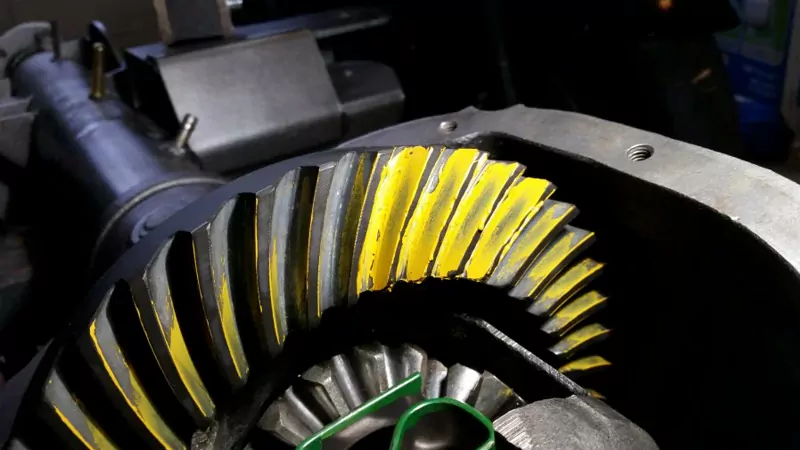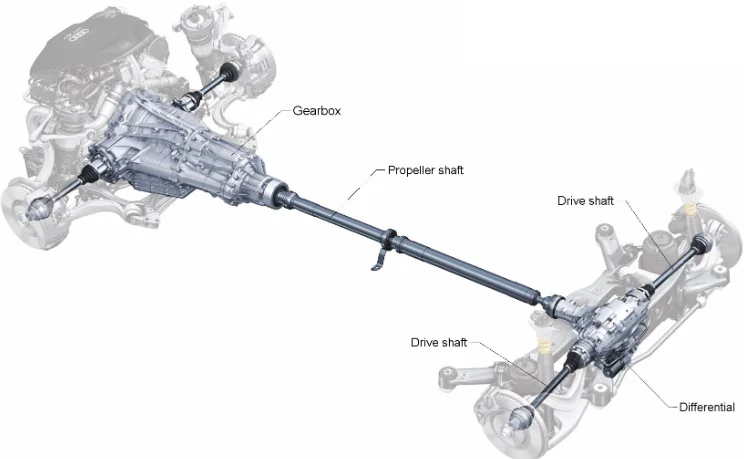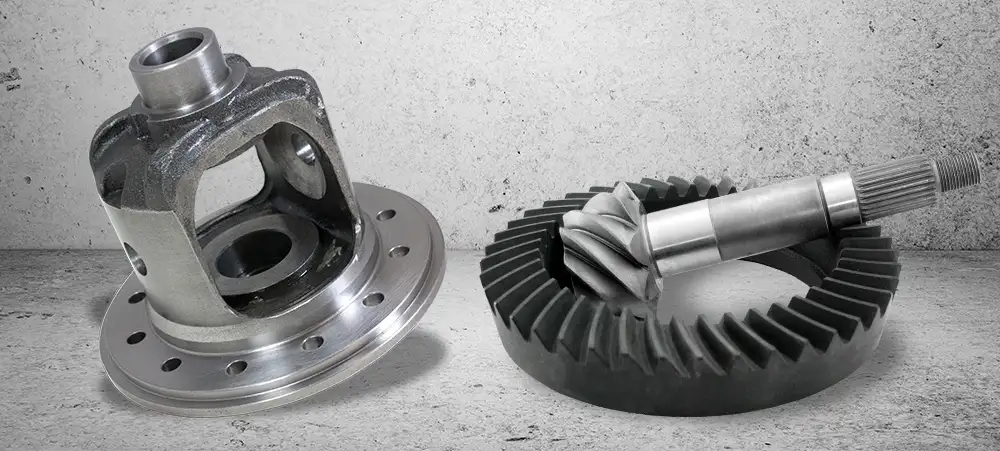When discussing vehicle performance, one of the most common questions enthusiasts, mechanics, and drivers alike ask is: Does a lower gear ratio increase speed? Understanding this requires a closer look at how gear ratios work, their effect on torque and engine performance, and the practical implications for driving different vehicles. In this article, we will explore these concepts in depth, provide examples, and clarify common misconceptions about gear ratios and speed.

What Is a Gear Ratio?
A gear ratio is a numerical representation of the relationship between the number of teeth on two meshing gears. In automotive applications, gear ratios are most commonly discussed in the context of the transmission or the differential. Essentially, the gear ratio determines how many turns of the engine or input shaft are required to turn the wheels once.
For example, if a vehicle’s differential has a gear ratio of 4.10:1, this means the driveshaft rotates 4.10 times for every single rotation of the wheels. Conversely, a 3.73:1 ratio means the driveshaft rotates 3.73 times for one wheel rotation.
The gear ratio directly affects two main aspects of vehicle performance: torque multiplication and vehicle speed.
How Gear Ratios Affect Torque and Speed
Torque Multiplication
Torque is the rotational force that helps a vehicle move from a standstill, climb hills, and accelerate. Gear ratios play a critical role in torque multiplication. A higher gear ratio (numerically larger, like 4.10:1) increases torque at the wheels, allowing the vehicle to accelerate faster and handle heavier loads.
In contrast, a lower gear ratio (numerically smaller, like 3.55:1) reduces torque multiplication. This means less rotational force is applied to the wheels, making the vehicle feel less powerful during acceleration or when towing.
Vehicle Speed
Vehicle speed is affected inversely to torque. While higher gear ratios provide more torque, they limit top speed because the wheels rotate fewer times per engine revolution. Lower gear ratios allow the wheels to rotate more times per engine revolution, which can increase top speed, assuming the engine produces enough power to overcome aerodynamic and mechanical resistance.
However, it’s important to note that lower gear ratios do not make a vehicle accelerate faster. Acceleration depends on the combination of torque, engine power, and vehicle weight. A lower gear ratio improves the potential top speed but sacrifices the initial acceleration.
Lower vs. Higher Gear Ratios: Practical Examples
Let’s examine a practical example to illustrate how gear ratios impact speed and acceleration.
Example 1: Pickup Truck
Imagine a pickup truck with a stock differential gear ratio of 3.73:1. This truck accelerates moderately and can reach highway speeds efficiently.
- Scenario 1: Switching to a Higher Gear Ratio (4.10:1)
- Acceleration improves because more torque reaches the wheels.
- Top speed may slightly decrease due to the engine reaching its maximum RPM at a lower speed.
- Ideal for towing or off-road driving.
- Scenario 2: Switching to a Lower Gear Ratio (3.55:1)
- Acceleration becomes slower since less torque is delivered.
- Top speed can increase because the wheels rotate more per engine revolution.
- Better for highway cruising where high-speed efficiency is desired.

Example 2: Sports Car
- A gear ratio of 2.93:1 in the final drive ensures the engine can maintain high-speed performance efficiently.
- Switching to a higher gear ratio would improve acceleration but reduce the car’s top-end speed.
These examples illustrate the trade-offs between acceleration and top speed based on gear ratio.
Transmission Gears and Gear Ratios
- Transmission Gear Ratios: Each gear in a manual or automatic transmission has a specific ratio that multiplies torque differently. Lower gears (1st, 2nd) have higher ratios, providing maximum torque for acceleration. Higher gears (4th, 5th, 6th) have lower ratios, allowing higher speeds at lower engine RPMs.
- Differential Gear Ratios: The final drive ratio in the differential further multiplies torque from the transmission. It determines the balance between acceleration and top speed for the vehicle as a whole.
Understanding both is crucial when modifying a vehicle or choosing gear ratios for performance purposes.
Misconceptions About Lower Gear Ratios
Many people assume that a lower gear ratio automatically increases speed. While technically a lower numerical ratio can improve top-end speed, there are several caveats:
- Engine Power Limitations: If the engine cannot produce enough horsepower at high RPMs, lowering the gear ratio will not significantly increase top speed. The vehicle may struggle to reach its potential maximum speed.
- Acceleration Trade-Off: Lower gear ratios reduce torque at the wheels, meaning slower acceleration. For most street vehicles, this results in a sluggish feel during city driving.
- Fuel Efficiency: Lower gear ratios can improve highway fuel efficiency because the engine runs at lower RPMs. However, if the vehicle is frequently driven in stop-and-go traffic, the reduced torque may cause the engine to work harder, negating efficiency gains.
Factors That Influence the Effect of Gear Ratios on Speed
Several other factors determine how a lower gear ratio affects vehicle speed:
- Engine Torque Curve: Engines with a flat torque curve at high RPMs benefit more from lower gear ratios since they maintain power at higher speeds.
- Vehicle Weight: Heavier vehicles require more torque to accelerate. Lowering the gear ratio may negatively impact acceleration and drivability.
- Tire Diameter: Larger tires effectively reduce the overall gear ratio. Vehicles with oversized tires may need adjusted gear ratios to maintain acceleration and top speed.
- Aerodynamic Drag: At high speeds, aerodynamic drag becomes a significant limiting factor. Even with a lower gear ratio, a vehicle may not exceed its top speed if the engine cannot overcome air resistance.
Choosing the Right Gear Ratio for Your Needs
- Towing or Heavy Loads: Higher gear ratios (numerically larger) are preferred. They increase torque at the wheels, making it easier to move heavy weights or climb steep inclines.
- Highway Cruising: Lower gear ratios (numerically smaller) are more suitable. They reduce engine RPMs at cruising speed, improving fuel efficiency and achieving higher potential top speeds.
- Performance or Racing: This depends on whether the goal is rapid acceleration or sustained top speed. Sports cars often use lower numerical ratios for top-end speed, while drag racing vehicles may use higher ratios for maximum acceleration.
It is also possible to customize gear ratios for specific performance needs by changing the differential gears, transmission gear sets, or even tire sizes.
Real-World Applications of Lower Gear Ratios
- Off-Road Vehicles: Often use higher gear ratios to increase torque for climbing and crawling, sacrificing top speed.
- Highway Cruisers: Use lower gear ratios for relaxed driving at higher speeds and improved fuel economy.
- Performance Cars: Balance between gear ratios in the transmission and differential is critical to achieving a combination of acceleration and top-end speed.
- Trucks and Commercial Vehicles: Gear ratios are selected based on load requirements and driving conditions, often prioritizing torque over maximum speed.
These applications demonstrate how understanding gear ratios is crucial for optimizing vehicle performance based on specific goals.
How to Measure the Impact of Gear Ratios
- Calculate Wheel RPM: Determine how many revolutions the wheels complete per engine revolution using the gear ratio.
- Estimate Acceleration: Compare torque at the wheels with different ratios to see expected changes in 0-60 mph or 0-100 km/h times.
- Top Speed Potential: Using the vehicle’s engine redline, estimate the theoretical maximum speed in the highest gear with the selected ratio.
- Fuel Economy Considerations: Lower numerical ratios may improve fuel efficiency on highways but reduce efficiency in city driving.
These calculations help enthusiasts and engineers make informed decisions when modifying vehicles.
Conclusion
To answer the question: Does a lower gear ratio increase speed? — the answer is nuanced. A lower numerical gear ratio can increase potential top speed by allowing the wheels to rotate more times per engine revolution. However, this comes at the cost of reduced torque, slower acceleration, and potential limitations imposed by engine power and vehicle weight.
When selecting gear ratios, it’s crucial to consider the intended use of the vehicle, whether acceleration, towing, highway cruising, or racing. The ideal ratio balances torque and speed to achieve optimal performance. By understanding gear ratios, drivers and vehicle enthusiasts can make informed decisions that enhance driving experience, efficiency, and overall vehicle performance.
Ultimately, gear ratios are about trade-offs, and the right choice depends on your priorities: speed, torque, or a balance of both.


